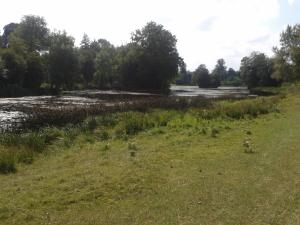
Last year, my annual pass at Legoland inspired me to write a blog post. This year we had National Trust membership and as it comes to an end, let me share a couple of observations about our experience.
The recent marketing strategy of the National Trust, which involves repositioning its offer away from grand houses and ‘look and don’t touch’ to happy memories, is well known. Has it been trying too hard to get with the times? It opened the Big Brother house to the public at the end of September last year – I won’t get side tracked on this issue.
What is interesting is to see how this repositioning has been put into practice.
The result is that the National Trust appears to have two main visitor groups: its core audience of ‘oldies’, and now young families too. Though these groups have quite different lifestyles, or at the very least, tend to not to spend their time in the same way, their needs are surprisingly similar in certain regards.
The idea of membership and having a pass which allows you limitless entry makes sense you have more time on your hands. This is the case for those whose children have left home and are retired. It also makes sense for those who are looking for low-risk days out – when you have a pass, it doesn’t matter if you only stay an hour one time as someone forgot to pack the nappies. And you can go again and again, giving you something to explore each weekend, or occupy a full day during the long school holidays. It’s not surprising, therefore, to read that membership has continued to grow despite the recent recession.
Both groups may experience limited mobility and thus appreciate support in this area. Hence, a sensible investment in golf buggies, which appeal to those whose legs have already put into many years of service, as well to those whose legs are still so small that even short distances can be rather tiring. My children found a high-speed ride on a golf buggy to be the highlight of the visit to one property. ‘Oldies’ and young families are also likely to be good customers at cafes.
In other areas, the expectations of these groups are not going to dovetail quite so neatly, and hats off to the National Trust for finding a way to include something which works for both in each situation. Take the shops, for instance. Whilst the oldies may check out pretty mugs and elegant gardening equipment, the young children will be congregating around the displays piled high with tasteful plastic tat that fits pocket money budgets. In the garden, whilst some may admire the carefully designed flower beds, others will be disappearing into tree houses, going on Easter Egg hunts or following other such trails.
The properties themselves are perhaps a higher risk area. However, handy worksheets will keep children curious and motivated to work through the building, whilst others can peer at the detail at their leisure.
And just in case it gets all too much, there are ways in which each group can go off and do their own thing. For the young families, there are often rooms filled with dressing-up clothes and replicas of old toys they can bash to their heart’s content, whilst hard core members can indulge in the nitty gritty of the history on a guided tour in peace and quiet. Given that I fall into the young family group, I must confess that the guided tour is something I have yet to experience.
